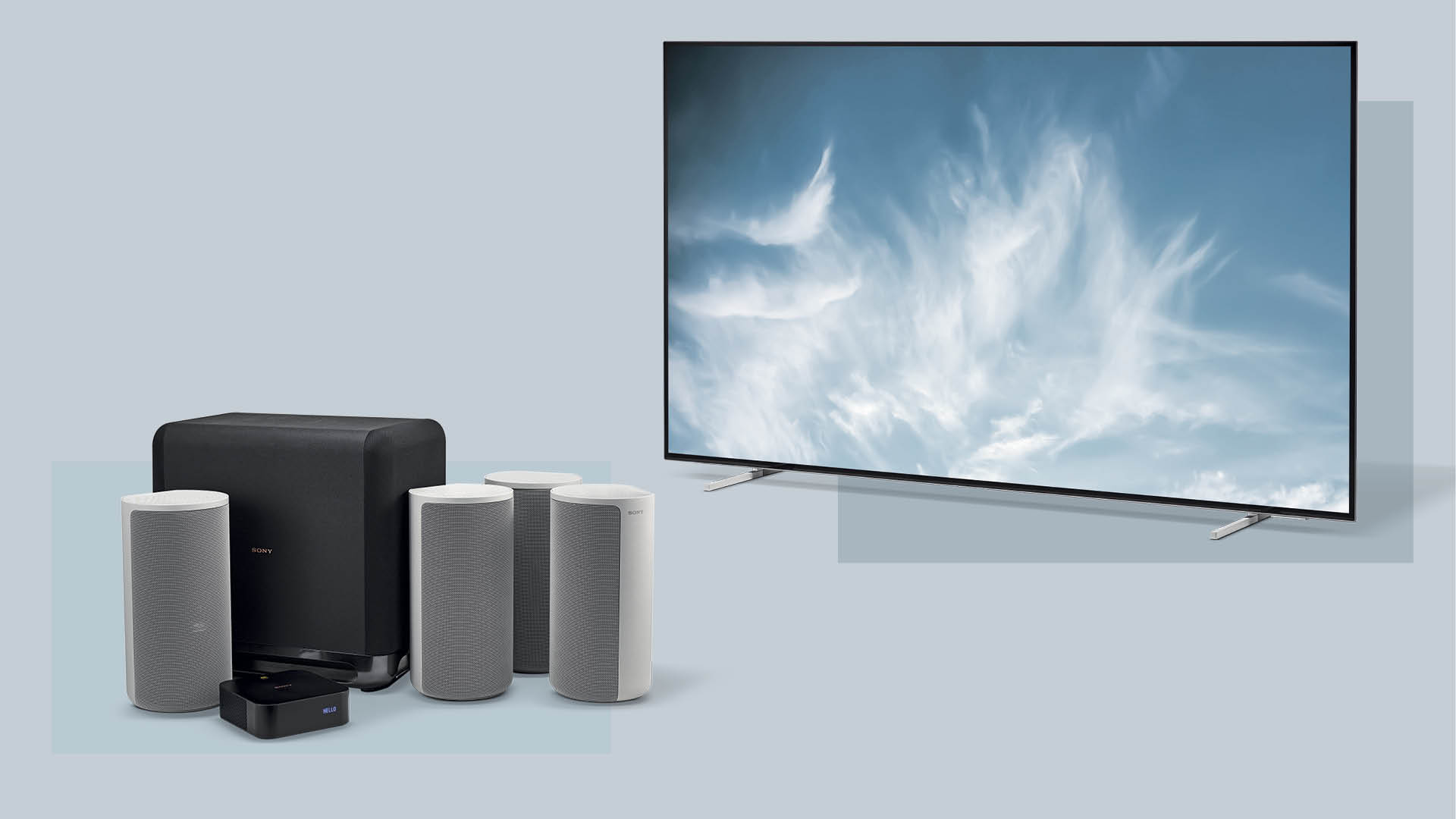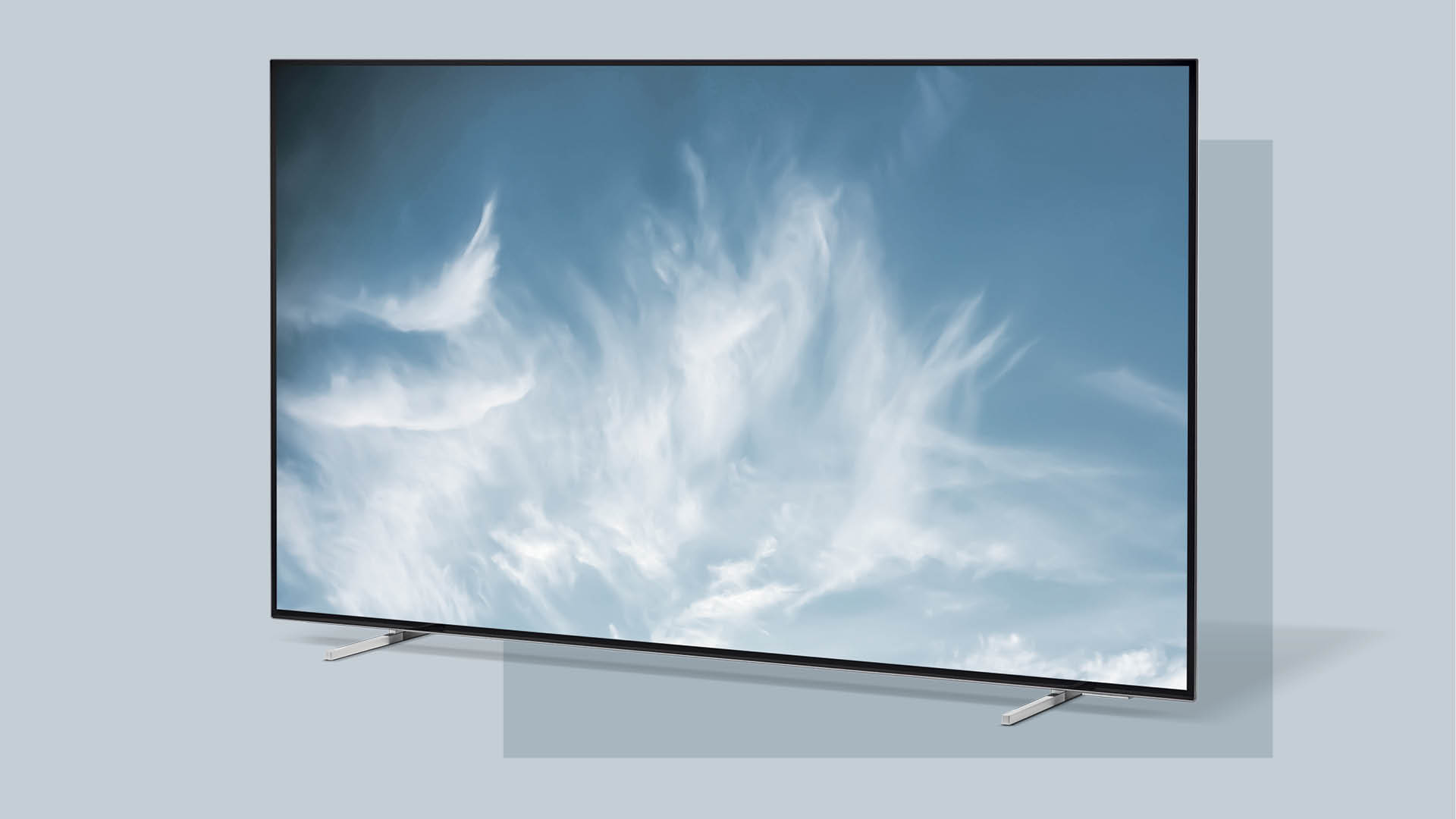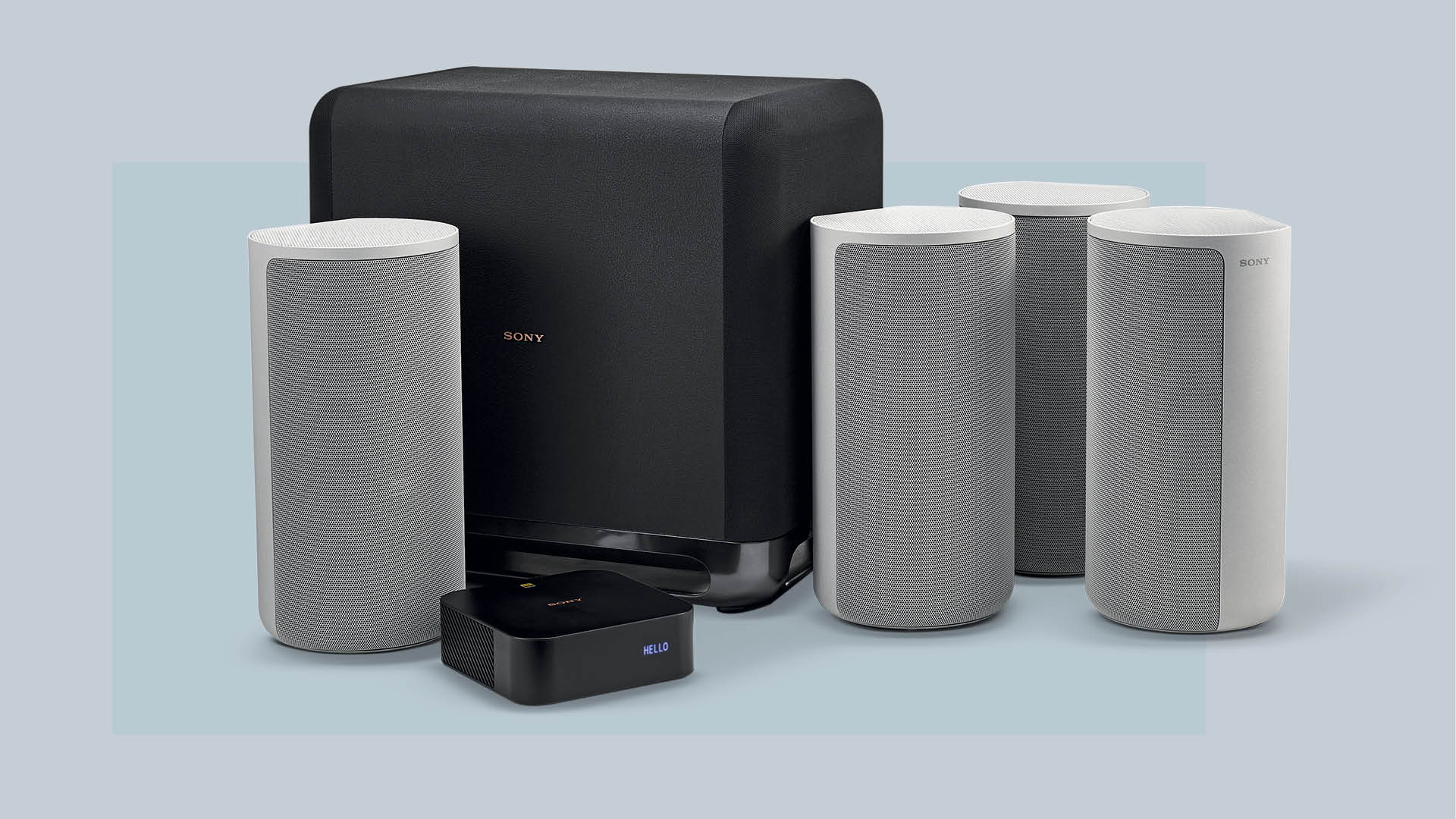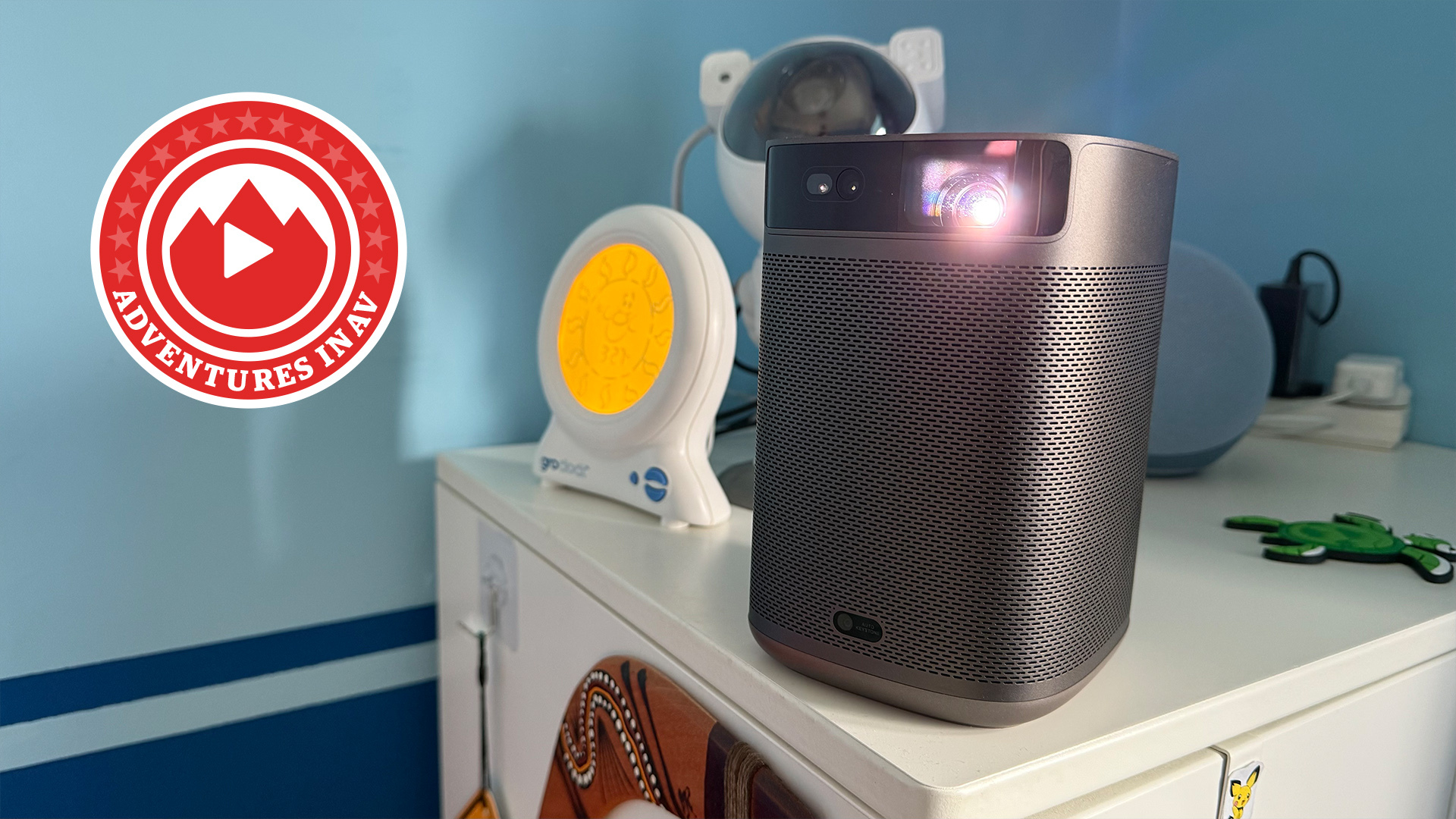This five-star home cinema system pairs a Philips OLED TV with an innovative Dolby Atmos system from Sony
A superb and seriously clever home theatre solution

The practicalities of a soundbar can’t be denied, and a good one is always better than a TV’s own sound. What’s more, as technology and, with it, the ambitions of engineers increases, so do the benefits of investing in a soundbar. The best can now give a decent impression of a home theatre speaker system without the need for bulky and possibly inconvenient extra boxes cluttering up the room.
The key phrase there, however, is ‘give a decent impression’; having physical speakers doing the surround sound work is pretty much always the best option if you can accommodate them. That isn’t always easy, especially when you take into account having to place speakers precisely, and find rack space for a home cinema amp to drive all those extra boxes as well.
What we have here then is a really neat, just a bit beyond half-way house between those two more conventional options.
The system
TV: Philips 48OLED806 (£899)
Surround package: Sony HT-A9 (£1799 / $1999 / AU$2699)
Total: £2698
TV: Philips 48OLED806

The Philips 48OLED806 is What Hi-Fi?’s TV Product of the Year. If you are thinking of replacing a smaller, older TV, and cannot quite get your head round the seemingly insane size of most modern TVs, please don’t discount this set. Forty-eight inches might sound a lot bigger than your old set, but its minimal bezel might well mean that it can fit in the same sort of space.
Around the back are two HDMI 2.1-rated sockets, two HDMI 2.0s, three USBs, optical out and a headphones socket for going hard-wired instead of Bluetooth (which also features). And of course this set comes with Philips’ Ambilight system, where LEDs shine onto the wall behind, changing colour to match the picture on-screen and helping to create a more atmospheric and cinematic experience. It might seem a little gimmicky at first, but turn it off and you’ll miss it.
One thing to bear in mind is that one of the two HDMI 2.1 sockets is also the one that handles eARC, which means that if you have two HDMI 2.1 sources (an Xbox Series X and PS5 or a high-end gaming PC), you’re not also going to be able to send sound via eARC to a soundbar or AV amp. This is a limitation of all TVs we have tested that have two HDMI 2.1 sockets; but Philips does somewhat mitigate this by supporting standard ARC via its other HDMI sockets. This won’t get you lossless, TrueHD Dolby Atmos, but it will get you Atmos in the Dolby Digital+ format, and we doubt many will hear much difference.
Get the What Hi-Fi? Newsletter
The latest hi-fi, home cinema and tech news, reviews, buying advice and deals, direct to your inbox.
The Philips isn’t the most user-friendly to set up or use, but once you’ve got things the way you like them, that’s not a great problem. On the plus side, Philips’s mixed OS approach means almost total coverage when it comes to apps and services. All the UK catch-ups are there, Netflix, Disney Plus and Amazon Prime Video are all available in top quality for sound and vision.
Should you find it is missing anything else you need, you can always use the platform’s Chromecast function to send streams from your phone, tablet or computer straight to your TV. You could, of course, also add a 4K Blu-ray player, but thanks to the streaming smarts of this set-up it doesn't really require one.
The main reason this set won its Product of the Year Award and its place here, though, is its outstanding picture performance. Sharper and more sophisticated in its use of light, it just feels a step above its main rivals.
It also has the best motion processing we have seen yet on a Philips TV. Its colour performance is just as impressive. Whether at 4K or HD, the 806 captures what feels like a true version of each shade. Suffice to say, the picture performance on this small-sized set is head and shoulders above the rest. It’s the best on the market at the moment for those after a premium TV with a more manageable footprint.
Surround package: Sony HT-A9

The cinema system we have paired it with is a rather curious beast, somewhere on the road between the convenience of a soundbar and the full-on surround sound of a 5.1 system.
The Sony HT-A9 takes many of the advantages of each of those sonic solutions and does its best to bring the best of both worlds. It gives you the clear benefits of having speakers spread around the listening area, while not being anywhere near as fussy about their placement as most normal surround packages. Indeed, so effective is it that it almost encourages its users to test it by positioning the speakers arbitrarily. It promises an even, uniform and immersive soundfield regardless of the symmetry of your set-up, and despite your best efforts.
Sony is reluctant to define the system in terms of discrete channels, saying instead that the four units will create a bubble of sound from 12 ‘phantom’ speakers. Sony is keen to stress that the speakers don’t need to be placed at the same height or in a regulated formation, though each rough position is labelled on the underside. Most intriguingly, there isn’t a dedicated centre speaker to anchor dialogue to the screen.
While we reserve a healthy dose of scepticism regarding phantom channels and sound bubbles, the wide dispersion of the HT-A9’s speakers is instantly striking and undeniably effective. Watching the race from Ready Player One in Dolby Atmos, there’s a tangible feeling of distance and motion as the vehicles zip and weave across the soundfield. Having four equally sized, capable and wide-ranging speakers means sounds from off-screen are as well conveyed as those from the front. There’s a refined precision and texture that is more immersive than any soundbar we’ve tried.
In dialogue-heavy scenes, despite the lack of a dedicated centre channel, there is good speech clarity. We find that when the front speakers are placed wide of the screen, voices can sometimes feel slightly recessed or heard more directly from the speakers than from the centre. But never in a way that overly distracts or impacts intelligibility, even when we try a very lop-sided arrangement. Still, we suggest positioning the front pair relatively close to the TV to help tighten up the image.
There are still limitations as to what it can deliver, and despite the tonal range, precision and expansiveness of the HT-A9 out-shining almost all similarly priced soundbars, the system doesn’t quite have the same fidelity and transparency we’d expect from a traditional speaker package.
Sony’s HT-A9 speaker system offers immersive home cinema sound without pretension, successfully combining the ease and streaming features of a soundbar with the consistency and immersion of a traditional surround package.
Verdict
This is an accessible and generous set-up for people who want to add entertaining audio to their living room without being precious and would well suit those with large families or who live in awkward spaces. It is incredibly forgiving in its placement, and it suits the Philips television we have paired it with here wonderfully well.
When you marry the neat Sony speaker system with Philips’ stunning 48in OLED TV, which is providing the source material here all on its own, you’ve got a terrific way of truly engrossing yourself in your movies and box sets in a small to medium-sized room. This may not be a set-up that many people would have considered, but we believe small house and flat dwellers should seriously consider it. It’s a belter.
MORE:
This superb AV system delivers 65-inch TV thrills courtesy of Sony and Dolby Atmos sound from Sonos
This sensational gaming system combines OLED TV tech, HDMI 2.1 support and Dolby Atmos audio
Our pick of the best Blu-ray and 4K Blu-ray players 2022

Jonathan Evans is the editor of What Hi-Fi? magazine, and has been with the title for 18 years or so. He has been a journalist for more than three decades now, working on a variety of technology and motoring titles, including Stuff, Autocar and Jaguar. With his background in sub-editing and magazine production, he likes nothing more than a discussion on the finer points of grammar. And golf.
